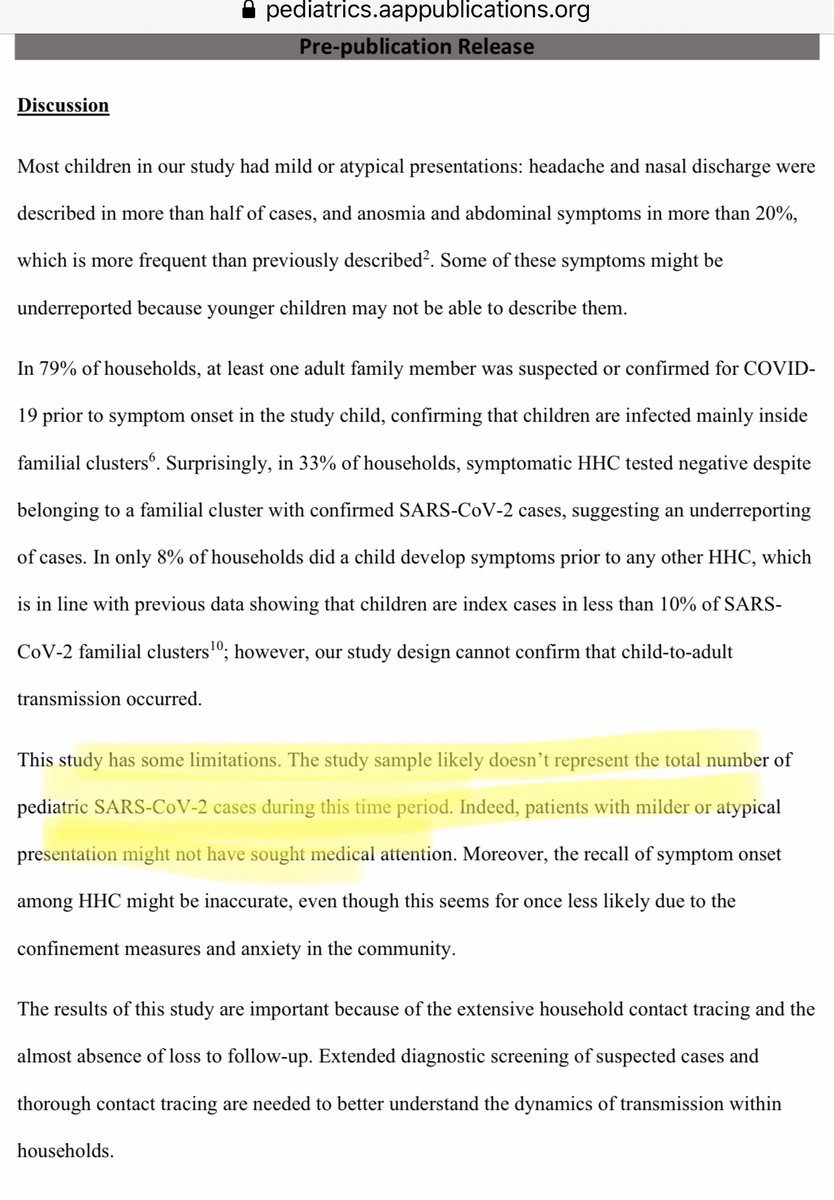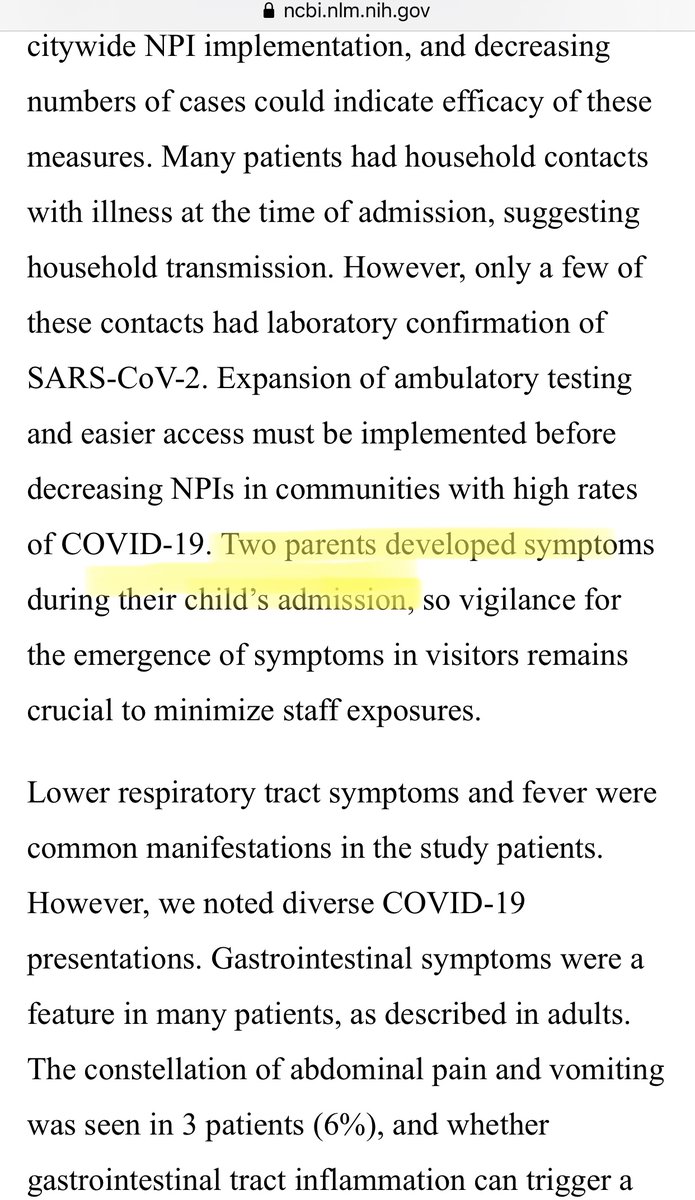1/ I& #39;ve been seeing a lot of discussion about studies that show transmission of COVID-19 does not occur as often from children to adults. This is being used to support the argument that we can open K-12 schools in the fall. Here& #39;s what I& #39;ve been able to find...
2/ Academic Mama is one example of this. She says "Transmission of COVID-19 in children appears to primarily be from adults passing the virus to children, rather than children passing the virus to adults," and cites four studies to support this claim. https://www.academicmama.com/blog/2020/6/covid-19-and-school-reopenings">https://www.academicmama.com/blog/2020...
3/ Here& #39;s the first study: https://www.ncbi.nlm.nih.gov/pmc/articles/PMC7147903/">https://www.ncbi.nlm.nih.gov/pmc/artic...
4/ But this article barely touches on transmission, and when it does, notes children likely _are_ playing a role in transmission and spread in the community.
5/ Here& #39;s the second study cited: https://pediatrics.aappublications.org/content/early/2020/05/22/peds.2020-1576.long">https://pediatrics.aappublications.org/content/e... (see link to download full PDF)
6/ The limitations of this study note that it does not include mild or asymptomatic pediatric cases that didn& #39;t seek medical attention. So, it doesn& #39;t capture data for children with few or no symptoms spreading COVID-19 to adults, which is, arguably, the area of highest concern.
7/ Here& #39;s the third article cited: https://pediatrics.aappublications.org/content/early/2020/06/08/peds.2020-0961.long">https://pediatrics.aappublications.org/content/e...
8/ This article clearly notes low levels of transmission from children to adults in China, with one major caveat. "This might be explained by the stringent implementation of home confinement and nationwide school closure as required by Chinese governments."
9/ Here& #39;s the fourth article cited: https://www.ncbi.nlm.nih.gov/pmc/articles/PMC7270880/">https://www.ncbi.nlm.nih.gov/pmc/artic...
10/ "Most patients (26 [52%]) had a documented adult family member or household contact with symptoms compatible with COVID-19." This article doesn& #39;t seem to argue that this means children aren& #39;t spreading COVID-19 to adults, but other articles have used similar data to do so.
11/ But a few notes... While 52% is technically "most," it also means about half of the cases don& #39;t seem to be linked to transmission from an adult household member. Additionally, this study specifically calls out adult parents developing symptoms after their child was admitted.
12/ Lastly, two recent studies that I found, which have been pretty heavily reported. The same organization studied a high school and primary school in the same area outside of Paris, France. Here& #39;s the high school study: https://www.medrxiv.org/content/10.1101/2020.04.18.20071134v1.full.pdf">https://www.medrxiv.org/content/1...
13/ It noted a significant "infection attack rate" between students at 40.9%, with a rate between students and parents at 10.9%. This may suggest that transmission between high school students and primary students should be viewed different, with older children at higher risk.
14/ Here& #39;s the study on primary students: https://www.medrxiv.org/content/10.1101/2020.06.25.20140178v2.full.pdf">https://www.medrxiv.org/content/1...
15/ It noted a low infection attack rate of 8.8% between students but showed rates from student to parents at 11.9%. However, of those students who were infected, 61% of parents were also infected.
16/ This study was in a town of 15,000 people, which is fairly small. About half, 51.5%, of the students agreed to participate in study, so there is a lot of missing data, and some people may have chosen to opt out due to concern of identification related to infection spread.
17/ Additionally, we know viral load is also associated with likelihood of infection. So if only a few people in a school are infected, transmission should be lower. But in areas that are hard hit, higher infection rates will mean higher transmission rates.
18/ And this is especially true of spread indoors, where the virus has been shown to linger in the air.
19/ Finally, are we just agreeing that a 12% rate is fine? But we are ok opening schools and infecting 12% of families? (And I still think that number is low for reasons listed above). I know we can& #39;t eliminate all risk, but what % indicates acceptable risk?
20/ Disclaimer: I am not a medical doctor. My PhD is related to communication and rhetoric. This thread is my best attempt at making sense of medical findings reported and researched by others.

 Read on Twitter
Read on Twitter





